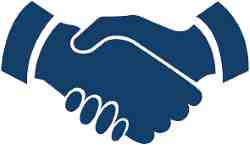Acupressure – Effective Treatment In Promoting Health In Infants And More
In a recent double-blind clinical trial* (at the School of Nursing at the China Medical University in Taichung, Taiwan), premature infants received meridian massage (acupressure) three times per day for 15-minute sessions over a course of 10 days. During the acupressure sessions, (prior to feedings) the study group (of premature infants) had their abdomens rubbed, received stomach meridian massage and other acupressure kneading applications.
Studying the control group (who received standard care) as well as the trial group, researchers made some remarkable observations. Though the first week of the research yielded no significant difference between the two groups; the ensuing week showed that weight gain of infants was substantially higher in the trial group. These results are promising as acupressure may be an effective and natural health treatment, which neonatal nurses can administer (to premature infants) to improve health and to stimulate growth.
What is acupressure?
Derived from acupuncture, acupressure is an ancient form of Chinese medicine that stimulates pressure points along the meridians of the body. As a noninvasive, natural health care treatment, acupressure is believed to remove blockages from Chi (life force/energy), thus restoring balance to the body and promoting self-healing capabilities.
Acupressure is both an energy medicine and a form of massage therapy, and treatment is typically pain free. In addition, needles are not necessary in this gentle but firm touch therapy (as with acupuncture).
Acupressure Health FAQs
In addition to helping promote health and wellness in premature infants, acupressure is known to help relieve pain, restore balance to the body, reduce stress, improve immune system functioning, enhance blood circulation, and promote overall wellbeing in children and adults.
Some of the many health conditions that acupressure can be helpful in treating include nausea (especially in cancer patients), fibromyalgia, back pain, and arthritis, among others.
Who can Practice Acupressure?
Though there are community courses that offer basic acupressure techniques for self healing, there are a growing number of massage therapy schools and Oriental medicine colleges that provide acupressure certification programs. Whether offered as an advanced study or as an individual training program, acupressure instruction generally entails the history and application of the healing art, as well as TCM (Traditional Chinese Medicine) philosophies. Other related studies include Five Element theories, meridian therapy, anatomy, physiology, and pathology.
Professional certification in acupressure can be achieved on a National level through the ABT (Asian Bodywork Therapy) exam, which is given through the National Certification Commission for Acupuncture and Oriental Medicine (NCCAOM). However, examine your prospective course of study carefully to make certain that it meets all educational and State training requirements (for National certification level).
Because massage therapy is growing in demand, diverse and specialized training like acupressure is essential to holistic health and conventional health practitioners. As mentioned in the clinical trial above, nurses who have acquired training in infant acupressure may well gain an advantage in employment in neonatal units. Other conventional medicine practitioners like veterinarians and vet technicians are turning to acupressure training to better serve their equine and canine patients. Massage therapists who have achieved acupressure certification are better equipped to offer more in-depth bodywork treatments to clients; and can earn a substantially higher income by adding these educational credentials.
Article source: In a recent double-blind clinical trial* (at the School of Nursing at the China Medical University in Taichung, Taiwan), premature infants received meridian massage (acupressure) three times per day for 15-minute sessions over a course of 10 days. During the acupressure sessions, (prior to feedings) the study group (of premature infants) had their abdomens rubbed, received stomach meridian massage and other acupressure kneading applications.
Studying the control group (who received standard care) as well as the trial group, researchers made some remarkable observations. Though the first week of the research yielded no significant difference between the two groups; the ensuing week showed that weight gain of infants was substantially higher in the trial group. These results are promising as acupressure may be an effective and natural health treatment, which neonatal nurses can administer (to premature infants) to improve health and to stimulate growth.
What is acupressure?
Derived from acupuncture, acupressure is an ancient form of Chinese medicine that stimulates pressure points along the meridians of the body. As a noninvasive, natural health care treatment, acupressure is believed to remove blockages from Chi (life force/energy), thus restoring balance to the body and promoting self-healing capabilities.
Acupressure is both an energy medicine and a form of massage therapy, and treatment is typically pain free. In addition, needles are not necessary in this gentle but firm touch therapy (as with acupuncture).
Acupressure Health FAQs
In addition to helping promote health and wellness in premature infants, acupressure is known to help relieve pain, restore balance to the body, reduce stress, improve immune system functioning, enhance blood circulation, and promote overall wellbeing in children and adults.
Some of the many health conditions that acupressure can be helpful in treating include nausea (especially in cancer patients), fibromyalgia, back pain, and arthritis, among others.
Who can Practice Acupressure?
Though there are community courses that offer basic acupressure techniques for self healing, there are a growing number of massage therapy schools and Oriental medicine colleges that provide acupressure certification programs. Whether offered as an advanced study or as an individual training program, acupressure instruction generally entails the history and application of the healing art, as well as TCM (Traditional Chinese Medicine) philosophies. Other related studies include Five Element theories, meridian therapy, anatomy, physiology, and pathology.
Professional certification in acupressure can be achieved on a National level through the ABT (Asian Bodywork Therapy) exam, which is given through the National Certification Commission for Acupuncture and Oriental Medicine (NCCAOM). However, examine your prospective course of study carefully to make certain that it meets all educational and State training requirements (for National certification level).
Because massage therapy is growing in demand, diverse and specialized training like acupressure is essential to holistic health and conventional health practitioners. As mentioned in the clinical trial above, nurses who have acquired training in infant acupressure may well gain an advantage in employment in neonatal units. Other conventional medicine practitioners like veterinarians and vet technicians are turning to acupressure training to better serve their equine and canine patients. Massage therapists who have achieved acupressure certification are better equipped to offer more in-depth bodywork treatments to clients; and can earn a substantially higher income by adding these educational credentials.
Article source: http://www.selfgrowth.com/articles/Acupressure_-_Effective_Treatment_in_Promoting_Health_in_Infants_and_More.html
View Videos
Submited By: CarolAnn Bailey-Lloyd







